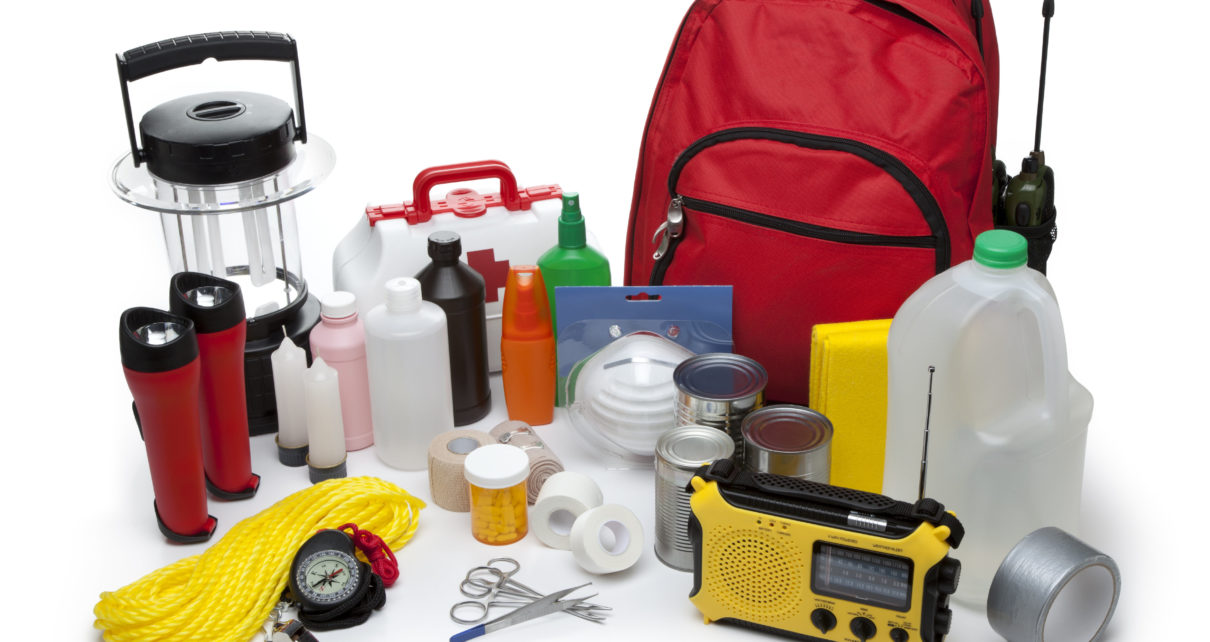Packing for a trip is an exciting time and everyone has their own method. Some plan for months and shop relentlessly for the perfect items to take on their great adventure. Others wait for the night before they leave and hurriedly throw everything in a bag, hoping they remembered enough critical items to make it through. No matter your technique, one thing should always go in the suitcase, an emergency kit in case you get stuck in a bind far from home.
Deciding what you’ll need in an emergency is an inexact science. There is no way to tell. So, the best course of action is to include items that provide the most benefit and assume the worst. It is also wise to include anything not readily available in the country you are visiting.
This list contains items that allow you to overcome obstacles and attend to basic human needs. It is by no means inclusive. Depending on where you are traveling and your circumstances you may require far more to safely prepare for an emergency. But by no means will you require less.
Portable Power
A smartphone can bail you out of most situations. They are a powerful survival tool regardless of where you are traveling. That is, of course, if you have power. Too many people are fully reliant on their phone to provide basic information such as current location and where the nearest emergency services are located but no plan is made for the one thing a phone needs: battery life.
Portable power devices are small enough to fit in your pocket but are powerful enough to allow for several full phone charges. Plus, the device is rechargeable through a standard USB port. Most cost less than thirty dollars which make them a true bargain in the essential survival tool world. To make sure you have power when you need it, buy the best dry bag you can find and use it to store critical electronics while traveling. If you don’t have one and plan on taking a trip, this is a highly recommended purchase.
Headlamps with LED Bulbs
Almost everyone thinks of a flashlight when packing for a possible emergency. After all, without light, it’s pretty hard to do much of anything. Headlamps take emergency preparedness a step further, especially when LED bulbs are involved. A headlamp will illuminate as much area as a traditional flashlight but also frees up your hands for whatever needs doing. And, they are more portable than the old D-cell monsters from years ago.
Better models include adjustable straps so that you won’t lose circulation in your scalp. Also, many are rechargeable which is a great feature if you are heading somewhere batteries might not be readily available.
Water Containers and Filtration
Nothing makes you feel more prepared for an emergency than a quality water container and filtration system. In a natural disaster, potable water can be hard to come by. A simple filter could be the difference between life and death. If you get lost hiking, you might find a water source, but filtering the water can make sure illness doesn’t prevent your rescue.
Water containers are often overlooked as a survival tool, but they are an important addition to any good emergency kit. For portability, hydration bladders are the best bang for your buck. Finding water is only half the battle, carrying it is the other.
Prescription Medication
It would not be good to be stuck somewhere without your heart medication or blood pressure medicine. Make sure to include an ample supply of your prescription medication in your emergency kit, especially if not taking it could be life threatening. Even something as benign as losing your luggage can turn into an emergency if you are missing your daily dose of certain medications in a foreign country. Plan ahead and keep your pills with you.
Basic First Aid Kit
Every traveler should have a basic first aid kit readily available. It doesn’t need to be extensive, but the basics should be well represented. Gauze and dressings for applying pressure, an assortment of band aids, and an antibacterial spray are all necessary items. It is good to include a space blanket for the treatment of shock and glucose if anyone in the party has diabetes. A quality kit can fit in a small container, so there is no excuse for leaving it behind.
Honorable Mentions
Depending on your destination there are a variety of things you might find valuable in an emergency. Here are a few that not only come through in a big way when the chips are down but are also portable enough to carry with you (although some won’t pass airport security).
- A Quality Folding Knife
- Multi-Tool
- Extra Cell Phone Battery
- Fire Starter or Matches
- Local Map
- Protein Bars
- Phone Numbers of Family or Emergency Services
- Copy of Passport
- Credit Card
- Local Currency
These are just a few items you may want to include in your bag before heading out for a long trip. Most are self-explanatory in their use and importance, and none take up much room.
It is surprising how many people leave on trips every day without a plan in place in case of emergency. Unfortunately, before you leave is often the only chance you have to prepare. Emergencies are annoying in that they are rarely scheduled and usually come out of the blue. Fortunately, it doesn’t take much to guard against worst case scenarios when traveling. So, pack your emergency items first and give yourself peace of mind the next time you set off on an adventure. Hopefully, you will never need them, but if you do, you’ll be ready.




